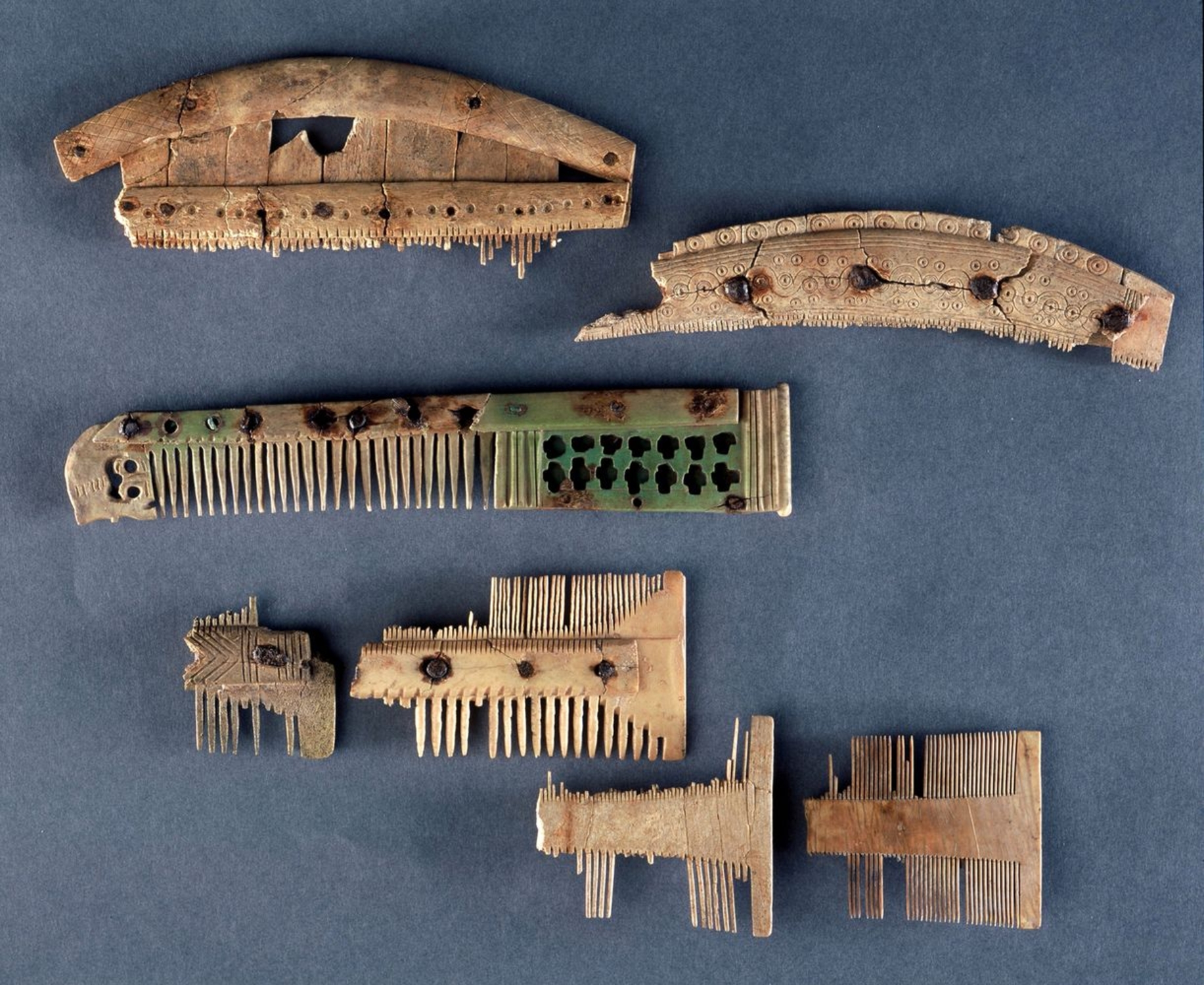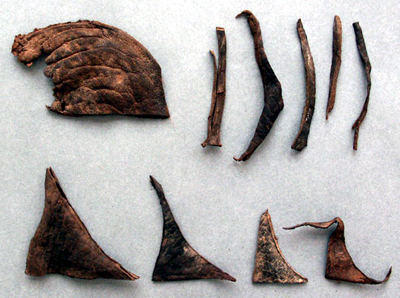- Home
- Crafts and daily life
- Crafts in the first millennium
- A Carolingian shoemaker
Leather scraps discovered in the ditches of the Carolingian castellum.
© UASD / Th. Sagory.
In compliance with the decrees of the Synod of Aix-la-Chapelle (816 and 817), the wardrobe of a Benedictine monk had to consist of "a pelisse descending to the heels, two leg-bands, gloves in summer, sheepskin mittens in winter, two pairs of shoes for day wear, two slippers for nights in summer, two padded slippers in winter". In the monastery at Saint-Denis, the presence of a shoemaker is attested to by a certificate dated February 8, 898 from Charles the Simple. It mentions an officina sutorum, or shoe-marker's workshop, inside the castellum Sancti Dionysii. It is tempting to make a connection between this workshop and the manufacturing scraps discovered in the filled-in levels of the Carolingian moats. These leather scraps display clean cuts and a grain that shows no sign of wear, which indicate the on-site manufacture of new pieces. The shoemakers may have worked leather prepared by the village of Villiers-le-Sec (in the Val d'Oise) at the abbey's request.

